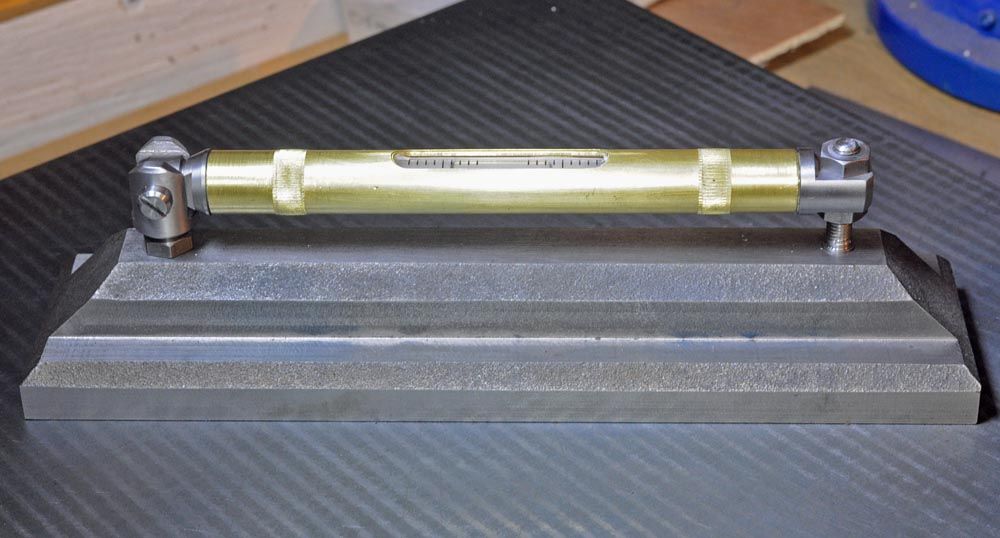Good morning, Steve,
Some time ago I replaced the vial in my Rabone 18" engineer's level. I described the process with photos in a thread on this forum – I had a quick search before coming to this post but I wasn't able to find it.
Here are a few observations in case you, or anyone else, decides to fit a new vial:
I bought the new vial from Level Developments. Some people thought that their price was expensive but I thought it fair considering that the vial is a precision component. I wouldn't like to try making them for that price!
The word at the time was that Level Developments make that sort of vial in batches and they aren't necessarily always in stock. But Level Developments themselves are, of course, the best source of information on that aspect.
There was a warning to be careful to protect the 'pip' on the end of the vial when back-filling the tube with plaster of Paris. I found this easy, my method is shown in the photos on the thread that I now can't find!!!
I do confess that I made a boo-boo – I should have painted the back of the new vial with white paint before fitting it. I backed mine with a piece of stiff paper, folded concertina fashion, but it shows through the rear of the vial and looks rubbish.
The plugs in the ends of the metal tube that houses the vial are (on the Rabone level, at least ) a push fit but it is a VERY TIGHT push fit. I found them tricky to remove, there isn't an easy way to hold the inner metal tube.
On refitting, the plugs need to be refitted with their flats level when the face of the vial is uppermost. And they are STILL a tight push fit and now there's an expensive new vial within the not inflexible metal tube.
My preferred sequence would be:
Fit one plug to the inner metal tube, taking care that the orientation of its flat extension aligns with the window in the metal tube,
Fit the outer metal tube and the two little leaf springs over the inner tube,
Fit the remaining plug, enuring that its flat extension aligns with the flat extension of the first plug and with the window in the inner metal tube,
Check your bench-top to ensure that you have no parts left over! 
Refit the vial & tube assembly to the cast iron base of the level.
I hope that this helps.
Best regards,
Swarf, Mostly!
Edited By Swarf, Mostly! on 27/08/2022 10:20:21
Kiwi Bloke.






